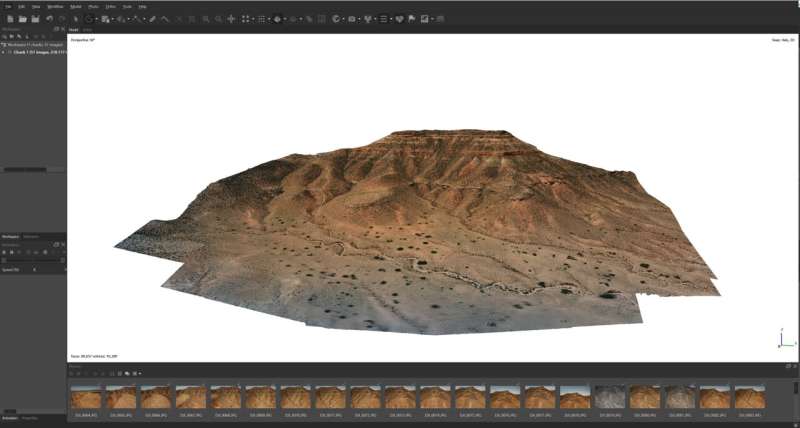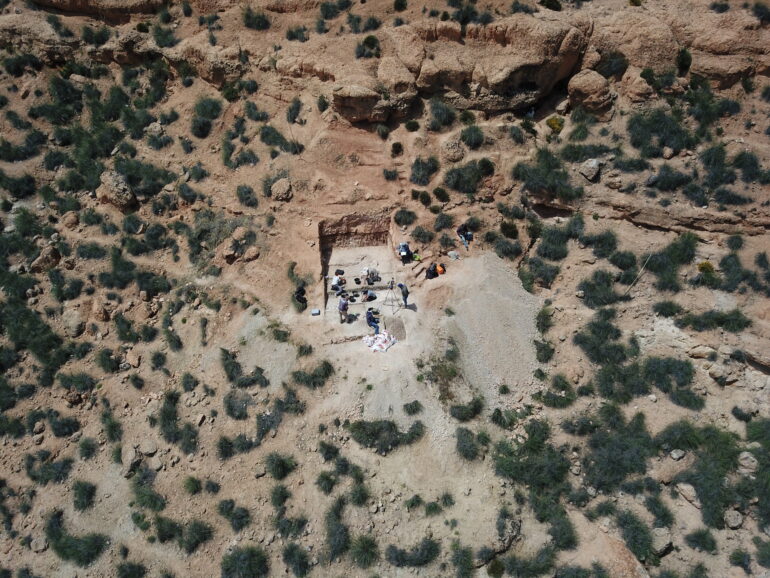Alfonso Benito Calvo, a geologist at the Centro Nacional de Investigación sobre la Evolución Humana (CENIEH), is part of the international team that has just published a paper in the journal Nature Communications about the work at the Guefaït-4 site in Morocco.
This work reconstructs the ecological context of northern Africa 2.5 million years ago.
Through multiple analyses, this multidisciplinary research team has been able to show that this area had a diversity of environments where aridity was the dominant ecological context, but there were also forested areas, wetlands and more open spaces.
This paleoecological information is very important for understanding the evolution of Plio-Pleistocene hominins in northern Africa and comprehending their adaptive capacity to the changing and ever more open environments we find in the African continent at this period.
Iván Ramírez-Pedraza, the lead author of the study and a researcher at the IPHES-CERCA, says, “Our results offer the first ecological framework known for northern Africa, where we did not previously have robust, tightly constrained data, unlike other parts of the continent such as the east and south.”
These data were obtained by applying well-tested and complementary analytical techniques. The main techniques were the analysis of stable isotopes and the dental wear on the faunal remains of large vertebrates recovered at the Guefaït-4 site.

3D aerial photogrammetry model of the Guefaït-4 site landscape. © Nature Communications (2024). DOI: 10.1038/s41467-024-52672-0
First, isotopic studies of dental enamel furnished information about the types of food ingested and the temperature of the water taken. Second, the authors conducted an analysis of the dental microwear: this consists of quantifying a series of marks such as scratches and pits, formed on the tooth surface while food is being consumed.
In addition to these analyses, the team also carried out pollen studies and analyzed the isotopes in the wax of the plants found in the sediments, identifying the different species of micromammals, microcrustaceans and algae at the site.
Expansion of the hominins
The stratigraphic studies performed at the CENIEH have made clear that the site was generated during a more humid phase that fostered the formation of lagoons at the foot of the mountains, and it was here that sludges and carbonates that permitted the fossilization and preservation of the faunal remains accumulated.
The period between the Pliocene and the Pleistocene (Plio-Pleistocene transition) is when the glaciations in the northern hemisphere and a global trend toward aridity got under way. Thanks to this research, we know that this aridity was also present locally, but it formed part of a very diverse ecosystem.
This regional mosaic environment, combined with moments during the transition cited when the Sahara greened, could have facilitated the dispersion of communities of mammals (including hominins) from central or eastern Africa toward the north of the continent, occupying ecosystems where the availability of resources was similar to that in their original habitats.
The evidence for the earliest hominins in northern Africa has been dated to around the Plio-Pleistocene transition (about 2.5 million years ago) at the Ain Boucherit site in Algeria. The ecological context for this first population is a key question for understanding how our ancestors and other mammals dispersed through this territory.
“If we consider how close together Guefaït and Ain Boucherit are, knowing the ecology of such a large territory can offer us clues to the ecological resources these first hominins could have availed themselves of,” explains M. Gema Chacón, a researcher at the IPHES-CERCA, who is also codirector of the project along with Dr. Robert Sala Ramos, a professor at the URV, and Hassan Aouraghe, a professor at the UMP.
More information:
Iván Ramírez-Pedraza et al, Arid, mosaic environments during the Plio-Pleistocene transition and early hominin dispersals in northern Africa, Nature Communications (2024). DOI: 10.1038/s41467-024-52672-0
Citation:
Geologists reconstruct ecosystems of northern Africa where the first hominins arrived (2024, October 7)



